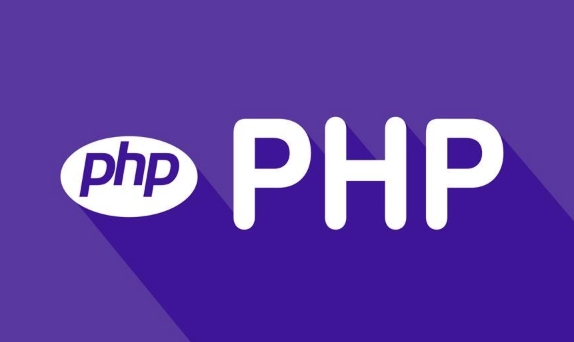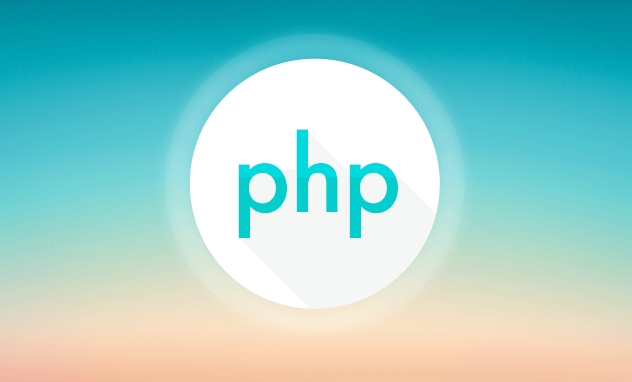What are PSR Standards and Why Are They Important in PHP?
Jul 10, 2025 pm 01:20 PMPSR is a PHP standard recommendation, formulated by the PHP framework interoperability group, aiming to improve code consistency, readability and cross-frame compatibility. Common standards include: 1. Basic PSR-1 specifications, such as labels and naming conventions; 2. PSR-4 automatic loading standards, defining class and path mapping; 3. PSR-12 extended coding style, refined format rules; 4. PSR-3 log interface, supporting log library replacement; 5. PSR-7 HTTP message interface, convenient for middleware and API development. Its value is reflected in improving multi-project collaboration efficiency, enhancing tool support, simplifying integration, and improving code expertise. Application methods include configuring PSR-4 with Composer, automatically formatting code with the help of tools, manually following PSR-1 rules, and implementing PSR-3 or PSR-7 interfaces in component development.

PSR stands for PHP Standards Recommendations. They're a set of coding standards and best practices created by the PHP Framework Interop Group (PHP-FIG), which is basically a group of PHP framework representing trying to standardize common practices across different projects.

The main idea behind PSR standards is to make PHP code more consistent, readable, and interoperable between different frameworks and libraries.
What Are the Common PSR Standards?
There are quite a few PSRs out there, but the most commonly used ones in modern PHP development include:

- PSR-1 : Basic coding standard — covers things like using
<?phptags properly, using only UTF-8, and following class/method naming conventions. - PSR-4 : Autoloading standard — defines how classes should be mapped to file paths so that autoloading works smoothly.
- PSR-12 (Extended Coding Style): Builds on PSR-1 and adds more detailed formatting rules, like spacing around operators, line lengths, and control structure formatting.
- PSR-3 : Logger interface — provides a common interface for logging libraries so you can swap one logger for another without rewriting your app.
- PSR-7 : HTTP message interfaces — defines interfaces for HTTP requests and responses, useful if you're building or working with middleware or APIs.
These aren't mandatory — they're recommendations , but they've become widely adopted, especially in frameworks like Laravel, Symfony, and Laminas.
Why Do PSR Standards Matter?
Using PSR standards might not feel essential when you're working alone, but once you're collaborating or sharing code, their value becomes obvious.

Here's why they matter:
Readability Across Projects : When multiple developers follow the same standards, jumping between codebases becomes much smoother. You don't have to release style rules every time you switch frameworks.
Better Tooling Support : Tools like PHP-CS-Fixer, PHP_CodeSniffer, and IDEs can auto-format code based on PSR standards. That makes it easier to enforce consistency automatically.
Easier Integration : Libraries built with PSR-4 autoloading work well together because they follow a predictable structure. Same goes for PSR-7 HTTP interfaces — if two packages use them, they can often plug into each other seamlessly.
Professional Appearance : Code that follows recognized standards looks more poisoned and professional, especially when open-sourced or shared with new team members.
Think of PSR like agreed-upon traffic rules — they don't force you to drive a certain car, but they help everyone move safely and efficiently.
How to Apply PSR Standards in Your Project
If you're starting a new project or cleaning up an old one, here's how to bring PSR into play:
Use PSR-4 autoloading via Composer: Define your namespace and directory mapping in
composer.json, then runcomposer dump-autoload -o.Format your code with PHP-CS-Fixer or PHP_CodeSniffer : These tools can check and fix PSR-12 compliance automatically.
-
Stick to basic PSR-1 rules manually if you're not using tools yet:
- Class names in StudlyCaps
- Method names in camelCase
- Always use full
<?phptags, never short echo tags like=unless absolutely necessary
If you're building reusable components, consider implementing PSR-3 or PSR-7 interfaces so others can integrate more easily.
Many modern IDEs (like PhpStorm or VSCode with PHP extensions) can auto-format code to match PSR-12 as you type, which makes sticking to the standard almost effortless.
In practice, PSR standards aren't about being strict — they're about making life easier when working with PHP at scale. Most frameworks already follow them, so aligning your own code with these standards just helps everything fit together better.
Basically that's it.
The above is the detailed content of What are PSR Standards and Why Are They Important in PHP?. For more information, please follow other related articles on the PHP Chinese website!

Hot AI Tools

Undress AI Tool
Undress images for free

Undresser.AI Undress
AI-powered app for creating realistic nude photos

AI Clothes Remover
Online AI tool for removing clothes from photos.

Clothoff.io
AI clothes remover

Video Face Swap
Swap faces in any video effortlessly with our completely free AI face swap tool!

Hot Article

Hot Tools

Notepad++7.3.1
Easy-to-use and free code editor

SublimeText3 Chinese version
Chinese version, very easy to use

Zend Studio 13.0.1
Powerful PHP integrated development environment

Dreamweaver CS6
Visual web development tools

SublimeText3 Mac version
God-level code editing software (SublimeText3)

Hot Topics
 php regex for password strength
Jul 03, 2025 am 10:33 AM
php regex for password strength
Jul 03, 2025 am 10:33 AM
To determine the strength of the password, it is necessary to combine regular and logical processing. The basic requirements include: 1. The length is no less than 8 digits; 2. At least containing lowercase letters, uppercase letters, and numbers; 3. Special character restrictions can be added; in terms of advanced aspects, continuous duplication of characters and incremental/decreasing sequences need to be avoided, which requires PHP function detection; at the same time, blacklists should be introduced to filter common weak passwords such as password and 123456; finally it is recommended to combine the zxcvbn library to improve the evaluation accuracy.
 PHP Variable Scope Explained
Jul 17, 2025 am 04:16 AM
PHP Variable Scope Explained
Jul 17, 2025 am 04:16 AM
Common problems and solutions for PHP variable scope include: 1. The global variable cannot be accessed within the function, and it needs to be passed in using the global keyword or parameter; 2. The static variable is declared with static, and it is only initialized once and the value is maintained between multiple calls; 3. Hyperglobal variables such as $_GET and $_POST can be used directly in any scope, but you need to pay attention to safe filtering; 4. Anonymous functions need to introduce parent scope variables through the use keyword, and when modifying external variables, you need to pass a reference. Mastering these rules can help avoid errors and improve code stability.
 How to handle File Uploads securely in PHP?
Jul 08, 2025 am 02:37 AM
How to handle File Uploads securely in PHP?
Jul 08, 2025 am 02:37 AM
To safely handle PHP file uploads, you need to verify the source and type, control the file name and path, set server restrictions, and process media files twice. 1. Verify the upload source to prevent CSRF through token and detect the real MIME type through finfo_file using whitelist control; 2. Rename the file to a random string and determine the extension to store it in a non-Web directory according to the detection type; 3. PHP configuration limits the upload size and temporary directory Nginx/Apache prohibits access to the upload directory; 4. The GD library resaves the pictures to clear potential malicious data.
 Commenting Out Code in PHP
Jul 18, 2025 am 04:57 AM
Commenting Out Code in PHP
Jul 18, 2025 am 04:57 AM
There are three common methods for PHP comment code: 1. Use // or # to block one line of code, and it is recommended to use //; 2. Use /.../ to wrap code blocks with multiple lines, which cannot be nested but can be crossed; 3. Combination skills comments such as using /if(){}/ to control logic blocks, or to improve efficiency with editor shortcut keys, you should pay attention to closing symbols and avoid nesting when using them.
 How Do Generators Work in PHP?
Jul 11, 2025 am 03:12 AM
How Do Generators Work in PHP?
Jul 11, 2025 am 03:12 AM
AgeneratorinPHPisamemory-efficientwaytoiterateoverlargedatasetsbyyieldingvaluesoneatatimeinsteadofreturningthemallatonce.1.Generatorsusetheyieldkeywordtoproducevaluesondemand,reducingmemoryusage.2.Theyareusefulforhandlingbigloops,readinglargefiles,or
 Tips for Writing PHP Comments
Jul 18, 2025 am 04:51 AM
Tips for Writing PHP Comments
Jul 18, 2025 am 04:51 AM
The key to writing PHP comments is to clarify the purpose and specifications. Comments should explain "why" rather than "what was done", avoiding redundancy or too simplicity. 1. Use a unified format, such as docblock (/*/) for class and method descriptions to improve readability and tool compatibility; 2. Emphasize the reasons behind the logic, such as why JS jumps need to be output manually; 3. Add an overview description before complex code, describe the process in steps, and help understand the overall idea; 4. Use TODO and FIXME rationally to mark to-do items and problems to facilitate subsequent tracking and collaboration. Good annotations can reduce communication costs and improve code maintenance efficiency.
 Quick PHP Installation Tutorial
Jul 18, 2025 am 04:52 AM
Quick PHP Installation Tutorial
Jul 18, 2025 am 04:52 AM
ToinstallPHPquickly,useXAMPPonWindowsorHomebrewonmacOS.1.OnWindows,downloadandinstallXAMPP,selectcomponents,startApache,andplacefilesinhtdocs.2.Alternatively,manuallyinstallPHPfromphp.netandsetupaserverlikeApache.3.OnmacOS,installHomebrew,thenrun'bre
 Learning PHP: A Beginner's Guide
Jul 18, 2025 am 04:54 AM
Learning PHP: A Beginner's Guide
Jul 18, 2025 am 04:54 AM
TolearnPHPeffectively,startbysettingupalocalserverenvironmentusingtoolslikeXAMPPandacodeeditorlikeVSCode.1)InstallXAMPPforApache,MySQL,andPHP.2)Useacodeeditorforsyntaxsupport.3)TestyoursetupwithasimplePHPfile.Next,learnPHPbasicsincludingvariables,ech






